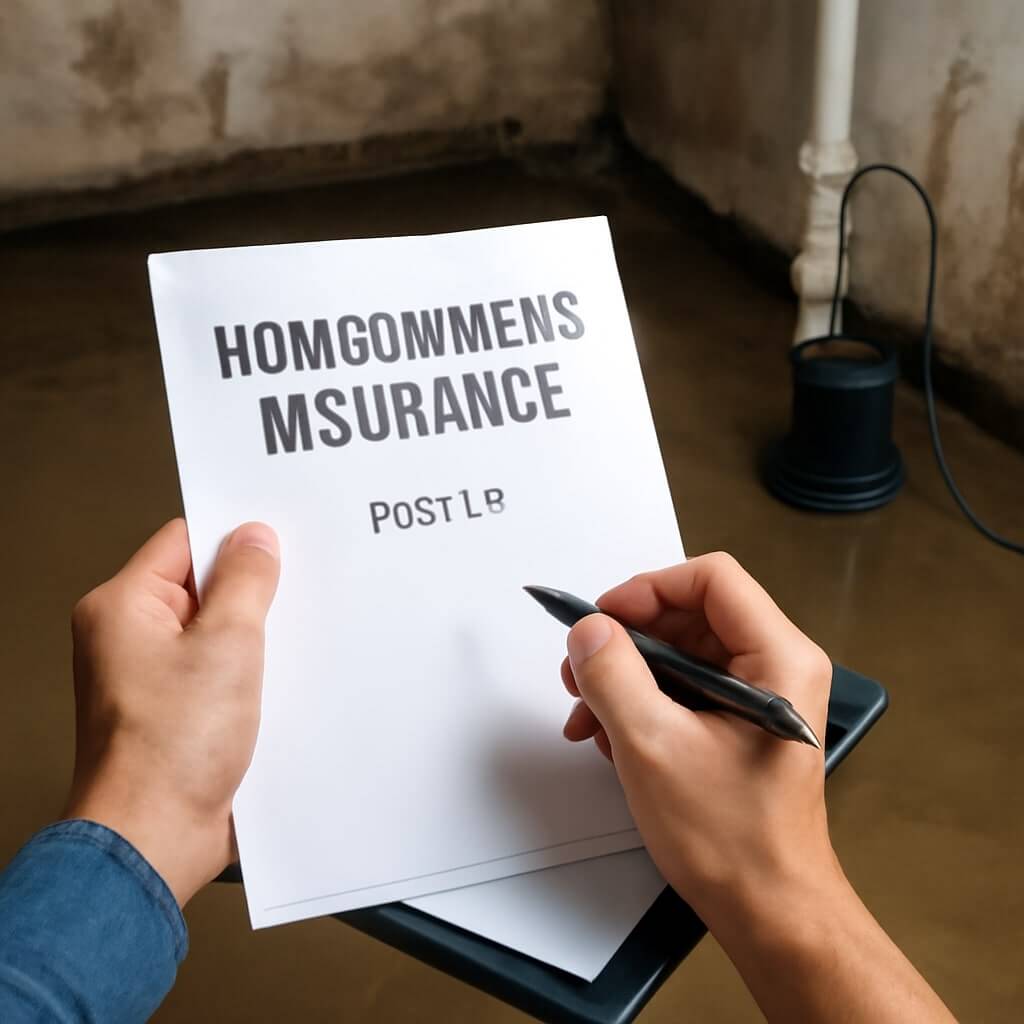Steering homeowners insurance for basement waterproofing claims can be complex. You need to understand your policy’s specifics, including what types of water damage are covered and any exclusions that may apply. It’s essential to meticulously document any damage and repairs while communicating effectively with your insurance adjuster. As you consider these factors, you’ll uncover key strategies that can help you avoid common pitfalls and maximize your claim. What comes next could greatly impact your financial outcome.
Key Takeaways
- Understand your policy’s terms, including coverage limits, deductibles, and exclusions related to basement waterproofing claims.
- Document all water damage thoroughly, including photographs and repair estimates, to support your claim effectively.
- Communicate clearly and professionally with your insurance adjuster, presenting organized documentation for a smoother claims process.
- Identify and address moisture issues early to prevent extensive damage and strengthen your claim’s validity.
- Submit your claim promptly and follow up regularly to monitor its progress and avoid delays.
Understanding Homeowners Insurance Policies
When you explore homeowners insurance policies, it’s important to understand the nuances that can affect your coverage, especially regarding basement waterproofing claims.
Familiarizing yourself with policy terminology is essential; terms like “exclusions” and “endorsements” can greatly alter your understanding.
Review your coverage limits carefully, as they dictate the maximum amount your insurer will pay for damages.
Some policies may cover specific waterproofing measures while others might not, so clarifying these details with your agent is crucial.
Understanding these aspects helps you navigate potential claims efficiently and guarantees you’re adequately protected against water damage in your basement.
Types of Water Damage Covered by Insurance
When evaluating water damage claims, it’s essential to understand the differences between sudden and gradual damage.
You’ll also want to differentiate between flood damage and water backup, as these scenarios often have varying coverage under your policy.
Additionally, be aware of specific exclusions that might affect your claim, as not all types of water damage may be covered by your homeowners insurance.
Sudden vs. Gradual Damage
While understanding the distinction between sudden and gradual damage is essential for homeowners, it directly impacts the types of water damage that your insurance policy may cover.
Sudden leaks, like a burst pipe, typically fall under most homeowners’ insurance policies, as they represent unexpected events. In contrast, gradual seepage, such as water infiltrating through cracks over time, often isn’t covered due to its slow nature and the expectation of preventative measures.
Knowing this difference helps you assess your coverage and take proactive steps, ensuring that you’re protected against sudden incidents while also addressing long-term maintenance concerns.
Flood vs. Water Backup
Understanding the difference between flood damage and water backup is vital for homeowners seeking clarity on their insurance coverage.
Flood damage typically arises from external sources, like heavy rains or rising rivers, requiring flood insurance for protection.
In contrast, water backup refers to issues originating within your home’s plumbing system, such as overflowing toilets or backed-up drains.
Standard homeowners insurance often covers water backup, but it’s important to confirm this with your policy.
Knowing these distinctions can help you navigate potential claims more effectively and guarantee you have the right type of coverage for your specific situation.
Policy Exclusions to Consider
After clarifying the differences between flood damage and water backup, it’s important to examine the specific policy exclusions that can impact your coverage for water damage.
Many homeowners insurance policies have policy limitations that exclude certain types of water damage, such as damage caused by gradual leaks or neglect.
Additionally, coverage gaps may arise if your policy doesn’t explicitly include basement waterproofing claims. Understanding these exclusions is essential, as they can leave you vulnerable to significant out-of-pocket expenses.
Always review your policy details thoroughly to guarantee you’re aware of any limitations that could affect your claims.
Assessing the Need for Basement Waterproofing
Many homeowners overlook the importance of evaluating their basement’s waterproofing needs until faced with costly water damage. To assess your basement moisture levels, consider the following factors:
| Signs of Moisture | Waterproofing Options |
|---|---|
| Damp walls | Interior drainage systems |
| Musty odors | Exterior waterproofing |
| Mold growth | Sump pump installation |
| Water stains | Sealants and coatings |
Identifying these signs early can save you from extensive repairs. Explore various waterproofing options tailored to your basement’s unique challenges, ensuring a dry, safe environment that protects your home’s value and integrity.
Documenting Damage and Repairs
When you experience water damage in your basement, accurately evaluating the extent of that damage is vital for your insurance claim.
You’ll need to document all repairs thoroughly, including keeping records of materials and labor costs.
Additionally, capturing before-and-after photos can provide compelling evidence of the work done and help support your claim.
Assessing Water Damage
While evaluating water damage in your basement, it’s crucial to thoroughly document both the extent of the damage and any repairs made. Start with a water damage assessment, noting visible signs like mold or peeling paint. Use moisture testing to determine affected areas.
| Damage Type | Emotional Impact |
|---|---|
| Mold Growth | Fear of health risks |
| Structural Damage | Anxiety about costs |
| Odor Issues | Frustration |
Repair Documentation Essentials
To effectively support your homeowners insurance claim, it’s essential to document all repairs and damage meticulously.
Start by creating a clear timeline of repairs, noting when each issue was identified and when work commenced. Obtain detailed contractor estimates that outline the scope of work, materials used, and associated costs.
This documentation not only provides evidence of the damage but also substantiates your claim’s legitimacy. Keep all correspondence with contractors and insurance representatives organized, as it can be critical for follow-up discussions.
Before-and-After Photos
Before-and-after photos serve as powerful visual evidence in your homeowners insurance claim for basement waterproofing. These images effectively illustrate the extent of damage and the improvements made through waterproofing efforts.
When documenting before and after transformations, make certain you capture clear, well-lit images from multiple angles. This detailed visual evidence not only strengthens your claim but also provides a compelling narrative of the repairs.
Additionally, organize these photos chronologically to make it easier for the insurance adjuster to follow your home’s journey from water damage to a dry, secure basement. Proper documentation can greatly influence the outcome of your claim.
Understanding Your Policy Limits and Deductibles
Understanding your policy limits and deductibles is essential for effectively managing claims related to basement waterproofing. Knowing these factors helps you gauge what your insurance will cover.
Understanding your policy limits and deductibles is crucial for effectively handling basement waterproofing claims.
- Claim limits: This is the maximum amount your policy will pay for basement waterproofing claims.
- Deductibles: You’ll need to pay this amount out-of-pocket before your insurer covers damages.
- Policy exclusions: Familiarize yourself with what’s not covered, as this can impact your claim.
The Claims Process: Step-by-Step
When you’re faced with basement water damage, documenting the extent of the damage is essential for a successful claim.
Take detailed photos and notes to support your case before submitting your claim to your insurance provider.
This thorough preparation can greatly influence the outcome of your claim process.
Documenting Damage Thoroughly
To guarantee a smooth claims process for basement waterproofing, it’s crucial to document any damage thoroughly. Start by conducting a detailed damage assessment, ensuring you capture every affected area.
Take clear photographs from multiple angles, noting the extent of the damage. Gather repair estimates from licensed contractors to support your claim.
- Record dates of damage and repairs
- List all affected items and their condition
- Keep copies of all correspondence with your insurance company
This thorough documentation will strengthen your case, making it easier to navigate the claims process and secure the necessary funds for repairs.
Submitting Your Claim
Submitting your claim for basement waterproofing damage begins with organizing your documentation and preparing the necessary forms.
Start by completing your insurer’s claim submission form, guaranteeing all details are accurate. Attach your thorough damage documentation, including photographs and repair estimates.
Submit your claim promptly to avoid delays in the claim timeline. Keep a copy of everything for your records.
After submission, follow up with your insurance adjuster to monitor the process and address any questions they may have. Staying proactive can help expedite your claim and guarantee you receive the coverage you need for the waterproofing repairs.
Common Pitfalls to Avoid When Filing a Claim
Filing a homeowners insurance claim for basement waterproofing can be a complex process, and several common pitfalls can hinder your success.
To increase your chances of approval, keep these points in mind:
- Ignoring Policy Details: Not understanding your coverage can lead to claim denial reasons that could’ve been avoided.
- Delaying Submission: Adhering to filing timeline tips is essential; delays can jeopardize your claim.
- Inadequate Documentation: Failing to provide sufficient evidence of damage may weaken your case.
Working With Insurance Adjusters
While maneuvering through the complexities of homeowners insurance claims for basement waterproofing, effectively working with insurance adjusters can greatly impact the outcome.
Prioritize clear adjuster communication; it’s key to understanding the specifics of your policy and the claim process. Be prepared to present thorough documentation, including estimates from contractors and photographs of damages.
During claim negotiation, remain professional and assertive, advocating for your needs while being receptive to the adjuster’s feedback. Building rapport can facilitate smoother discussions, ultimately leading to a more favorable resolution.
Preventative Measures to Consider for Future Claims
To minimize the risk of future basement waterproofing claims, homeowners should proactively implement a range of preventative measures.
Homeowners can reduce future basement waterproofing claims by actively adopting preventative measures.
By taking these actions, you can reduce the likelihood of water damage and bolster your insurance standing.
- Regularly inspect and maintain gutters and downspouts to guarantee proper drainage.
- Install a sump pump with a battery backup to manage excess water.
- Use water-resistant materials in basement renovations to mitigate damage.
These preventative measures not only protect your home but also strengthen your case should you face future claims, ultimately saving you time and money in the long run.
Resources for Homeowners Seeking Assistance
How can homeowners effectively navigate the complexities of waterproofing claims? Accessing reliable homeowner resources and insurance guidance is essential. Consider the following table to streamline your search for assistance:
| Resource Type | Description | Contact Information |
|---|---|---|
| Insurance Agents | Experts in policy interpretation | [Your Insurance Company] |
| Local Contractors | Waterproofing specialists | [Local Contractor Contacts] |
| Consumer Advocacy Groups | Help with claims disputes | [Advocacy Group Contacts] |
| Online Forums | Peer support and advice | [Forum Links] |
| State Insurance Department | Regulatory guidance | [State Department Contact] |
Utilizing these resources can enhance your understanding and improve your chances of a successful claim.
Conclusion
Steering homeowners insurance for basement waterproofing claims can be complex, but understanding your policy is vital. By clearly documenting damage and communicating effectively with your insurance adjuster, you can enhance your chances of a successful claim. Remember to assess your coverage limits and avoid common pitfalls to streamline the process. Additionally, taking preventative measures can safeguard against future issues. By being proactive and informed, you can protect your home and manage your insurance claims more effectively.

